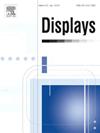SDG-YOLOv8: Single-domain generalized object detection based on domain diversity in traffic road scenes
IF 3.7
2区 工程技术
Q1 COMPUTER SCIENCE, HARDWARE & ARCHITECTURE
引用次数: 0
Abstract
Object detection is a fundamental task of environment perception in traffic road scenarios, and its accurate detection results are of great significance for improving the reliability of autonomous driving, improving public transportation services, and detecting traffic violations. However, the problem of domain offset between different traffic road scenarios leads to a poor generalization of the target detector. To overcome this problem, we propose a single-domain generalized object detection algorithm SDG-YOLOv8 based on domain diversity. First, we designed a local–global transformation module to transform the source domain into an auxiliary domain with the same annotations, increasing the domain diversity of the training data at the image level. Second, we design a normalization perturbation fusion module to implicitly change the input image’s style and increase the training data’s domain diversity in the feature space. Finally, we design an effective training loss function that further reduces the sensitivity of the detection model to domain offsets and improves the generalization ability of the target detector to access the unknown target domain. We conducted experiments on multiple datasets containing different weather, different cities, and virtual-to-reality, and our method significantly improves the detection accuracy for unknown target domains and outperforms other domain generalized object detection algorithms.
SDG-YOLOv8:交通道路场景中基于域多样性的单域广义目标检测
物体检测是交通道路场景中环境感知的一项基础任务,其准确的检测结果对于提高自动驾驶的可靠性、改善公共交通服务、检测交通违法行为具有重要意义。然而,不同交通道路场景之间的域偏移问题导致目标检测器的泛化能力较差。为了克服这一问题,我们提出了一种基于域多样性的单域广义目标检测算法SDG-YOLOv8。首先,我们设计了局部-全局转换模块,将源域转换为具有相同标注的辅助域,增加了图像级训练数据的域多样性;其次,设计归一化扰动融合模块,隐式改变输入图像的样式,增加训练数据在特征空间的域多样性;最后,我们设计了有效的训练损失函数,进一步降低了检测模型对域偏移的敏感性,提高了目标检测器进入未知目标域的泛化能力。我们在包含不同天气、不同城市和虚拟现实的多个数据集上进行了实验,我们的方法显著提高了未知目标域的检测精度,并且优于其他领域广义目标检测算法。
本文章由计算机程序翻译,如有差异,请以英文原文为准。
求助全文
约1分钟内获得全文
求助全文
来源期刊

Displays
工程技术-工程:电子与电气
CiteScore
4.60
自引率
25.60%
发文量
138
审稿时长
92 days
期刊介绍:
Displays is the international journal covering the research and development of display technology, its effective presentation and perception of information, and applications and systems including display-human interface.
Technical papers on practical developments in Displays technology provide an effective channel to promote greater understanding and cross-fertilization across the diverse disciplines of the Displays community. Original research papers solving ergonomics issues at the display-human interface advance effective presentation of information. Tutorial papers covering fundamentals intended for display technologies and human factor engineers new to the field will also occasionally featured.
 求助内容:
求助内容: 应助结果提醒方式:
应助结果提醒方式:


